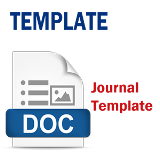COMPARISON OF RANDOM FOREST AND MAXIMUM LIKELIHOOD CLASSIFICATION METHODS FOR LAND COVER IN LANDSAT 9 IMAGES IN LUBUK KILANGAN DISTRICT
Abstract
Information on land cover is needed in various sectors including management and resources which can be obtained through data processing using remote sensing satellite imagery. This research was conducted in Lubuk Kilangan District using Landsat 9 imagery, with the aim of (1) knowing the land cover classification using the random forest method, (2) knowing the land cover classification using the maximum likelihood classification method, and (3) knowing the best method for obtaining land cover information based on the accuracy value between the random forest method and the maximum likelihood classification. The method used is a comparative quantitative method by comparing the random forest method and the maximum likelihood classification of land cover in Lubuk Kilangan District. This study performs classification accuracy test calculations using Kappa with the help of a confusion matrix. The results of the study obtained 13 land cover classes from were found from taking training samples showing (1) the random forest land cover classification method was able to classify images properly. This is proven by findings in the field where 86% of pixels are classified correctly. Meanwhile, (2) the maximum likelihood classification method of land cover classification is not able to classify images properly. This is proven by findings in the field where 55% of pixels are classified correctly. (3) the Kappa accuracy value found for the random forest method is 0.81, while the maximum likelihood classification method is 0.51. This shows that the random forest method is better at obtaining information on the land cover than the maximum likelihood classification method.







